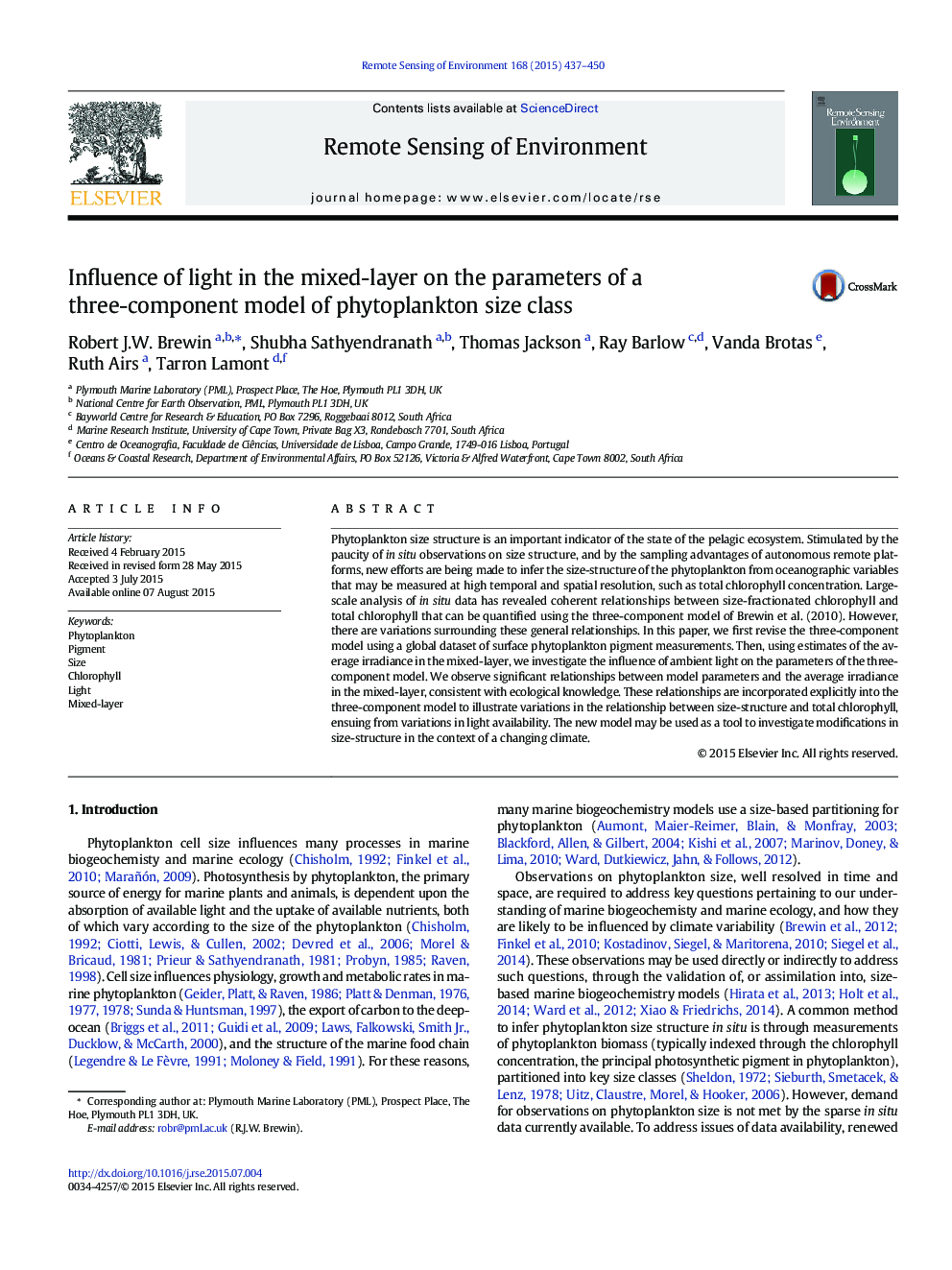| Article ID | Journal | Published Year | Pages | File Type |
|---|---|---|---|---|
| 4458833 | Remote Sensing of Environment | 2015 | 14 Pages |
•We revise the three-component model of size class for global application.•We observe significant relationships between model parameters and ambient light.•We present a new model that accounts for variations in ambient light.•The model can investigate effects of environmental change on phytoplankton size.
Phytoplankton size structure is an important indicator of the state of the pelagic ecosystem. Stimulated by the paucity of in situ observations on size structure, and by the sampling advantages of autonomous remote platforms, new efforts are being made to infer the size-structure of the phytoplankton from oceanographic variables that may be measured at high temporal and spatial resolution, such as total chlorophyll concentration. Large-scale analysis of in situ data has revealed coherent relationships between size-fractionated chlorophyll and total chlorophyll that can be quantified using the three-component model of Brewin et al. (2010). However, there are variations surrounding these general relationships. In this paper, we first revise the three-component model using a global dataset of surface phytoplankton pigment measurements. Then, using estimates of the average irradiance in the mixed-layer, we investigate the influence of ambient light on the parameters of the three-component model. We observe significant relationships between model parameters and the average irradiance in the mixed-layer, consistent with ecological knowledge. These relationships are incorporated explicitly into the three-component model to illustrate variations in the relationship between size-structure and total chlorophyll, ensuing from variations in light availability. The new model may be used as a tool to investigate modifications in size-structure in the context of a changing climate.
